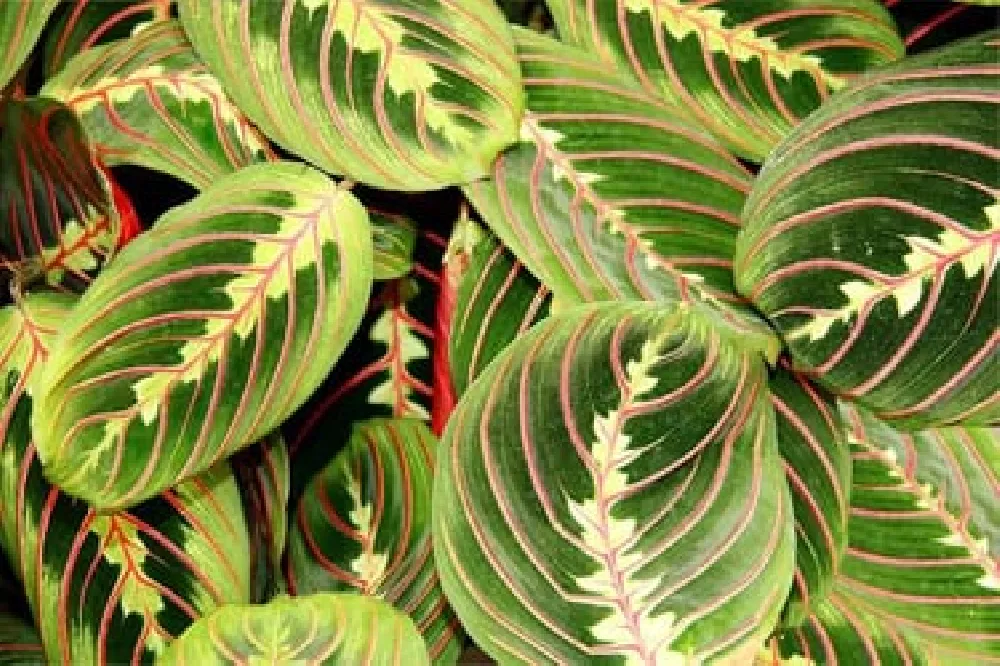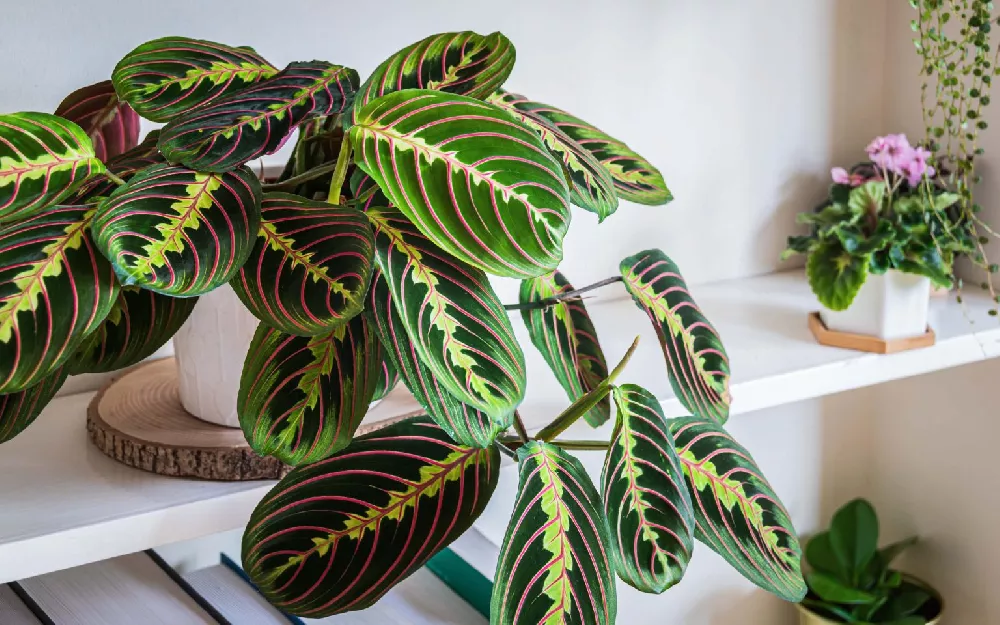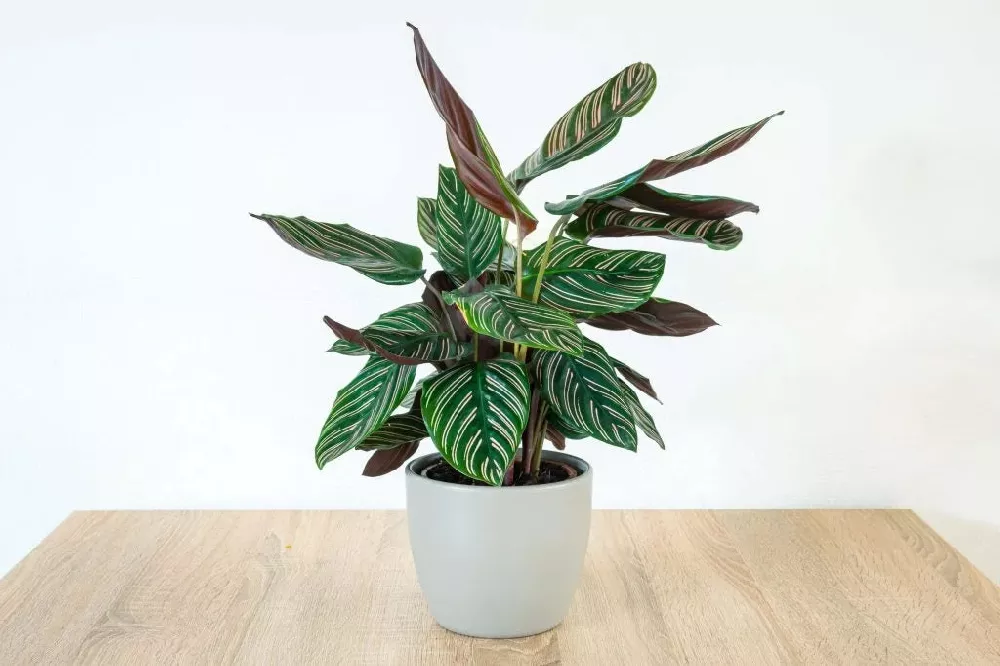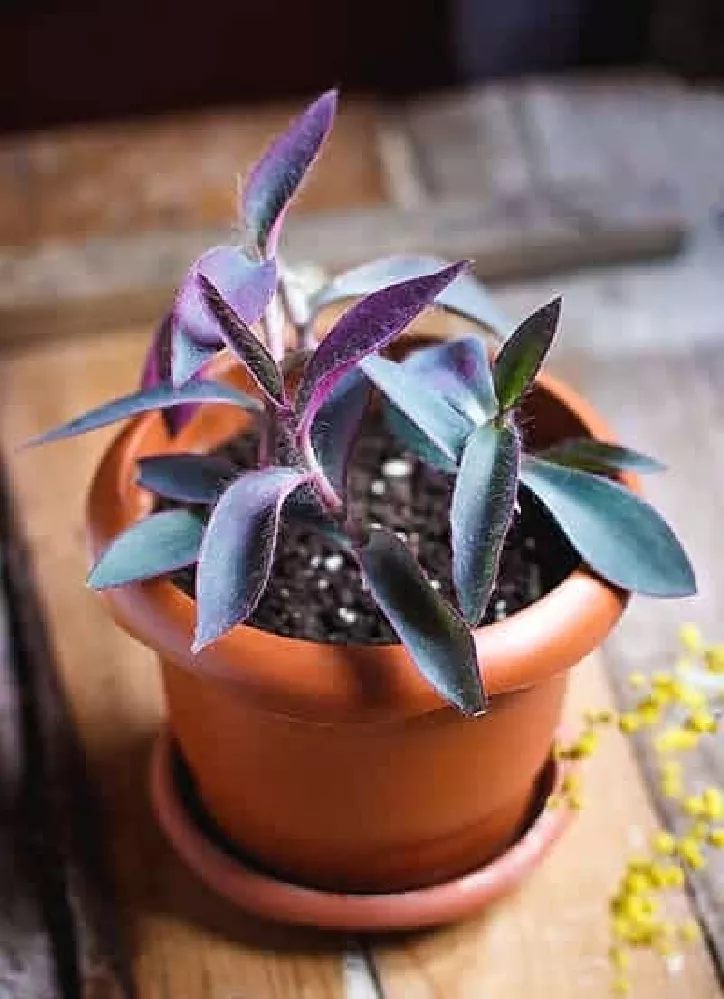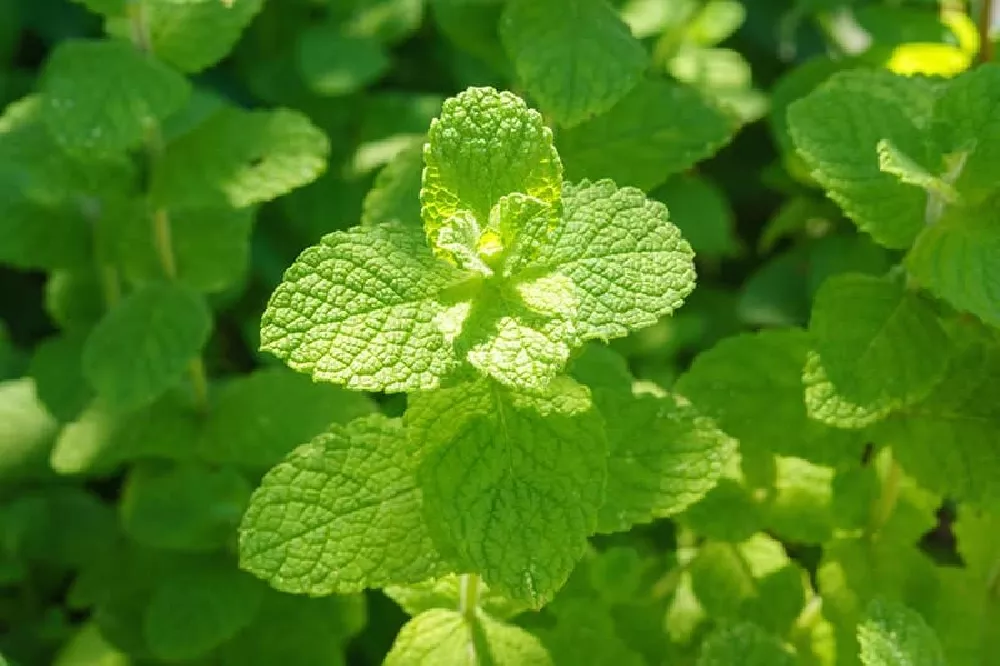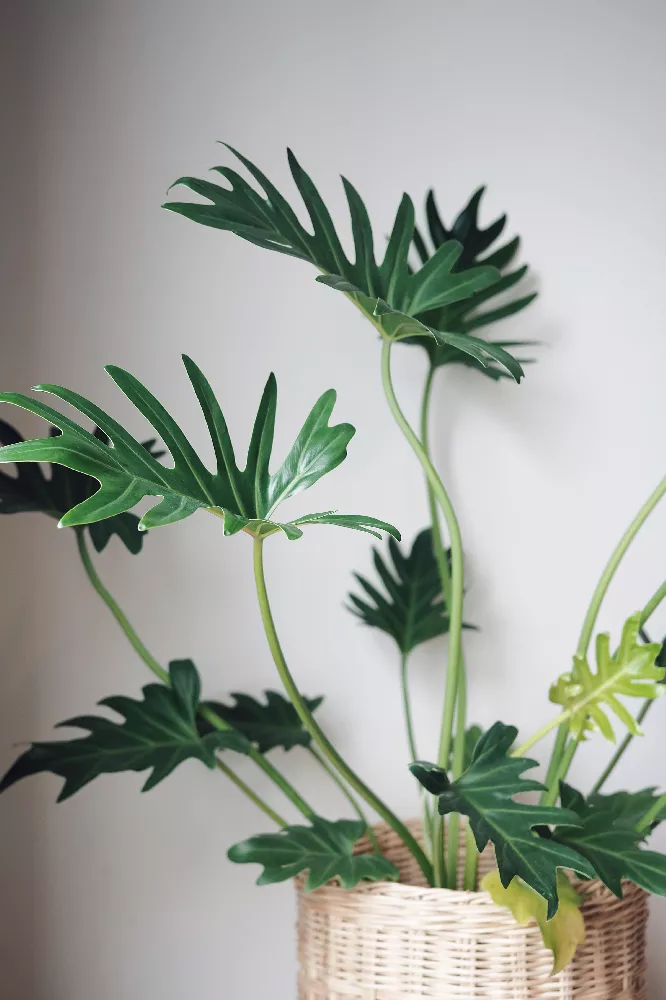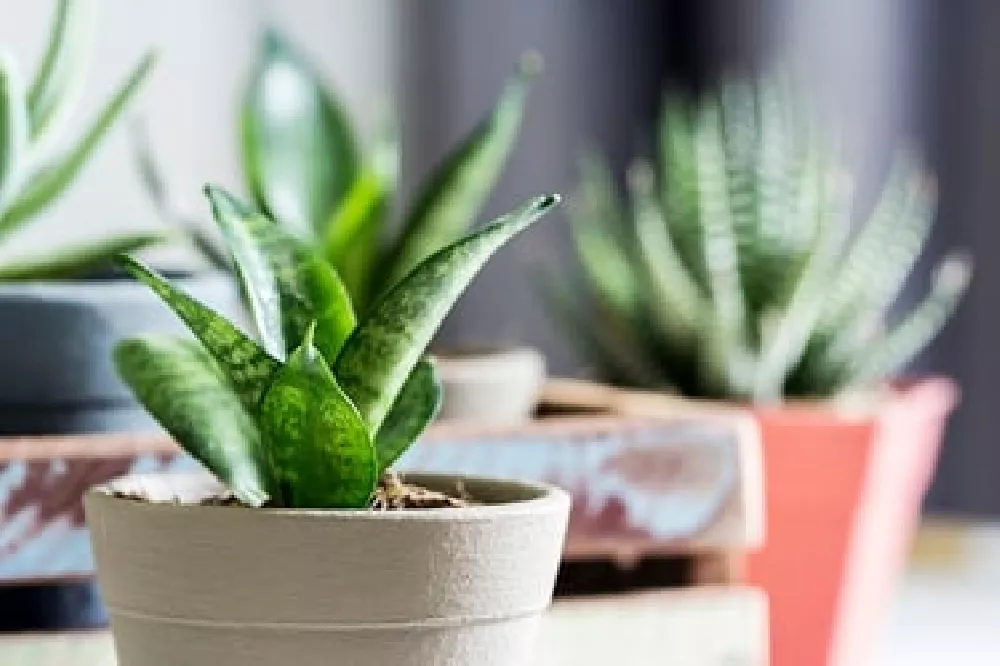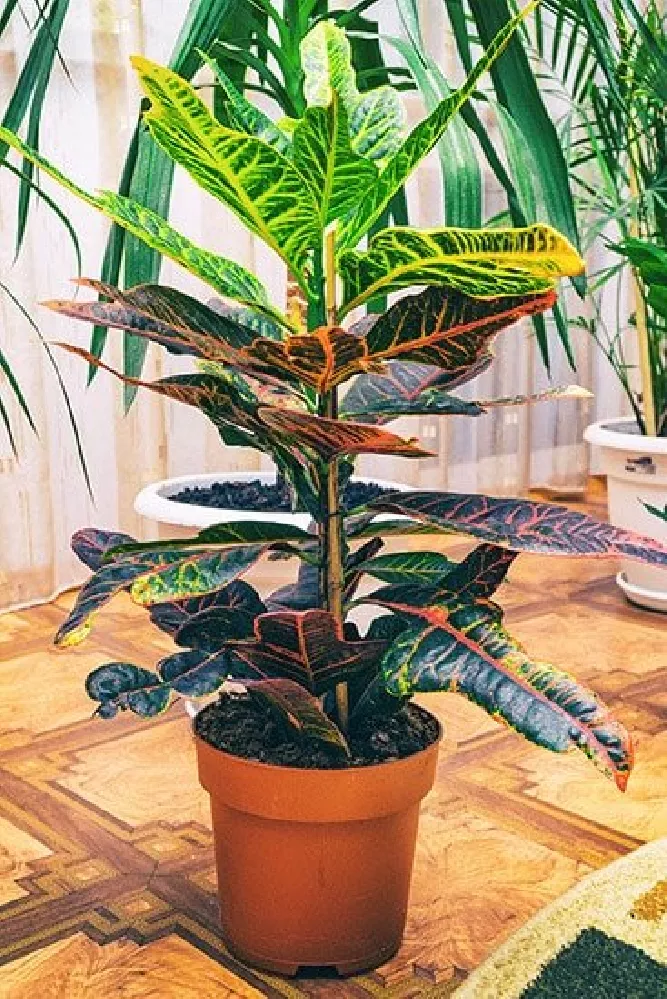- Home >
- Houseplants >
- Prayer Plants
Prayer Plants for Sale - Buying & Growing Guide
The prayer plant (Maranta leuconeura) is an attractive and interesting houseplant. The plant has a charming nightly habit of folding its leaves into an upright position resembling praying hands. When you combine that novelty with its striking striped leaves, the few challenges involved in its care become entirely worthwhile. Here are some other interesting facts about prayer plants:
- It’s native to the tropics of Brazil, and thrives outside in hardiness zones 11 and 12.
- It has a tendency to spread low and wide, making it particularly suitable as a ground cover or for hanging baskets and shelves.
- Its colors become more vibrant in lower light.
Enter your zip code to find nearby stores that may carry this plant.
Plant Care
Sunlight

Locate this plant in indirect sunlight. Direct sunlight will likely scorch leaves.
Watering
Wait until the first few inches of the soil are dry then soak the entire root ball.
Fertilizing

Use a fertilizer that has equal amounts of nitrogen, phosphorus, and potassium during the active growing season.
Planting and Care
Planting instructions
Though the prayer plant thrives outdoors in hot, humid climates, it is generally an indoor plant that will flourish when provided specific care. This plant likes moist, well-drained soil. Plant it in a soil mixture that’s two parts peat, one part loam, and one part sand. With shallow roots, prayer plants are vulnerable to overwatering, so it’s important to choose a container with good drainage.
Prayer plants require high humidity. Place its container on a gravel-filled tray of water, making sure that the container drainage holes are well above the water to avoid root rot. Other options for maintaining appropriate humidity include placing a humidifier or bowl of water near the plant, or misting it with room temperature or warm water.
The prayer plant is an understory plant in the Brazilian rainforest. As such, too much sun will burn and bleach a prayer plant’s leaves. Outside, prayer plants prefer shade. One interesting feature to call out is the prayer plant’s leaf coloration, which becomes more distinct in indirect, low light. In the right lighting environment, you’ll be able to observe your prayer plant’s leaves brightening in color. Temperatures between 60 and 80 degrees Fahrenheit will keep the prayer plant healthy, but if temperatures drop below that you are likely to see leaf damage.
Watering and nutrients
Though overwatering your plant can lead to fungal problems, the prayer plant does not do well when allowed to dry out. It requires frequent watering to keep its soil moist, but not soggy. Water should not be allowed to collect or sit directly on the plant’s leaves. Both drying and overwatering will result in yellowing leaves and leaf drop. The plant will require less water in the winter. Do not water prayer plants with cold water. Use water that’s been allowed to come to room temperature.
The prayer plant’s growing season is from early spring through fall, and during that time you should apply a water-soluble houseplant fertilizer (10-10-10) diluted to half strength, every other week. Lack of nutrients will result in slow growth, while fertilizer that is too strong will result in brown leaves. Once the growing season is over, you can cut fertilization back to once a month.
Prayer plants do not need frequent repotting. If you find growth has slowed, it may be time to repot to give the plant more room. Choose a container that is only slightly larger than the one your plant is currently in, shaking the roots clean and giving it new potting soil. The best time to repot is in early spring, right before the growing season begins.
Propagation
If your prayer plant is healthy and thriving, you’ll find that it’s a great candidate for dividing. Prayer plants are extremely easy to propagate. You can make new plants by dividing the parent plant or taking stem cuttings. Here’s more information on both methods:
- Division. Repotting is the perfect time to divide your prayer plant. Gently pull a section of the plant away, separating the roots and then planting each new plant into its own container. New plantings need a little extra warmth and moisture as they become acclimated to their new container.
- Stem cuttings. Prayer plant stem cuttings will quickly grow new roots. Cut a stem below a leaf node and then settle it into a glass of water. Refresh the water every few days until roots form, then shift the rooted stem directly into a small pot with soil. Keep the soil moist while the plant grows and stabilizes.
Pruning
Prayer plants don’t require pruning, but doing so can make a big difference in how full and healthy-looking your plant is. To give your plant a bushier appearance, sterilize a pair of garden shears and then clip a few of its stems directly above a leaf node. New growth will appear right below where you cut the plant.
Pests, diseases, and animals
The most common household plant pests to afflict prayer plants are spider mites. Fortunately, an infestation is unlikely if you’re keeping your plant at the appropriate level of humidity. Keep an eye out for the characteristic webbing of spider mite infestations. Spider mites prefer hot and dry conditions, so as long as you’re providing proper growing conditions, mites are unlikely to be a problem. If mites do appear, an application of neem oil or other plant-based oils will help eradicate them. Botanical oils on the leaf surface will smother the larva and disrupt breathing in adult insect instars.
Another possible issue is Helminthosporium leaf spot is a fungal disease affecting the prayer plant, usually seen with the presence of over-irrigation or standing water. It is important to water the plant correctly at the base of the plant only. Remove any standing water and keep leaves from getting too wet. Neem oil will treat this disease and help stave off future infections.
Temperature
As the Prayer Plant originates from the rainforest, it can bear neither extremely hot nor very cold temperatures. These plants grow best in warm temperatures, between 65 and 70 °F. Avoid temperature below 55 °F because it could damage the leaves.
If the temperature is too cold, the leaves will shrink and turn a brownish color, and if its too hot, they will turn dark as a result of burning.
Light
Prayer plant requires medium to high light. When there isn’t enough light, the leaves won’t open entirely during the day, and if the light is too strong, it will fade the leaves and in some cases could kill the plant. So, make sure it is always under bright but indirect sunlight. You could also use a sheer curtain or something similar to protect it from the sun.
Light shade is best for summer, and a bit brighter light is best in winter, yet it should still be indirect.
If you have no other option, this plant could also grow under fluorescent light.
Fertilizer
This plant doesn’t need much fertilizer; twice per year could be enough. But if you want to boost its growth, feed it with light, half-diluted liquid fertilizer once every two weeks through the growing season. Reduce fertilization in the winter.
Humidity
Prayer Plant is a tropical plant and thus requires a very humid environment. If the air is too dry, the leaf tips turn brown. Increase the humidity when the temperature is above 65°F, or in winter when the air is usually drier indoors. If you have a bright bathroom, it would be a great spot to place your Prayer Plant because the steam from the shower will add humidity to the air.
FAQs
Are prayer plants toxic to pets and children?
The prayer plant is non-toxic, making it an excellent choice for homes with pets and kids.
What can I do to keep my prayer plant’s humidity level high enough?
Mist your prayer plant daily with a plant mister, being careful not to leave large drops of water that might lead to oversaturation. Keeping the plant’s container on a tray of pebbles and water or near a humidifier also works well.
What do curling leaves on my prayer plant mean?
Curling leaves generally mean that the plant is getting too much light or the wrong amount of water. Check the area around the roots to make sure that they are moist but not overly saturated.
